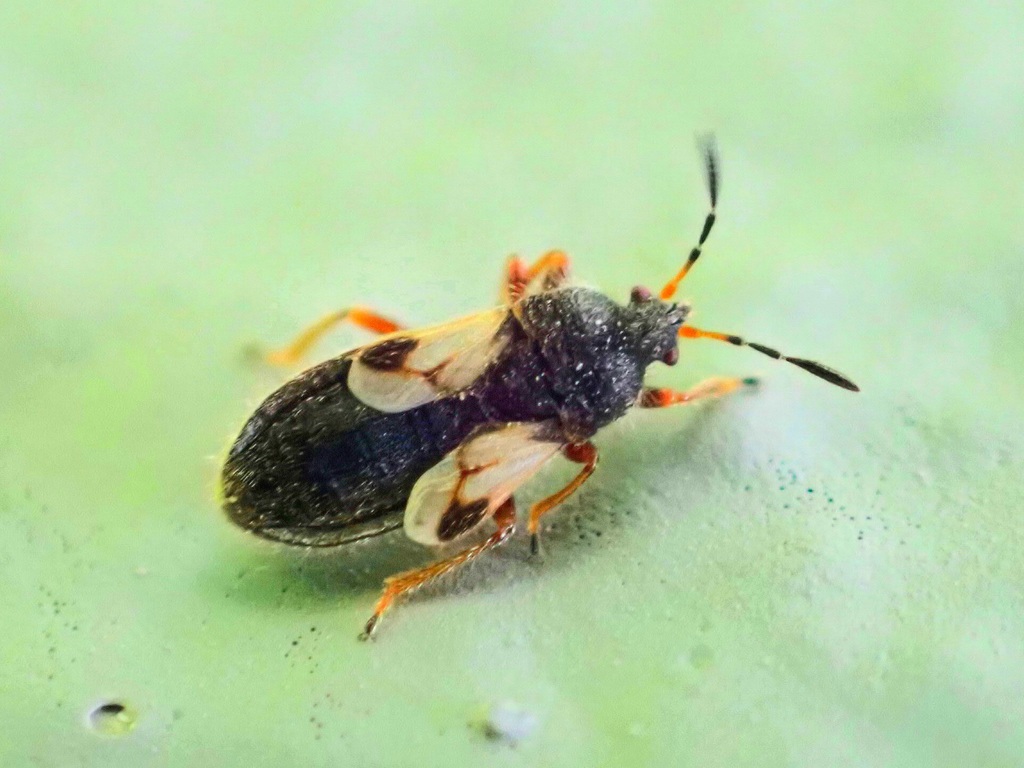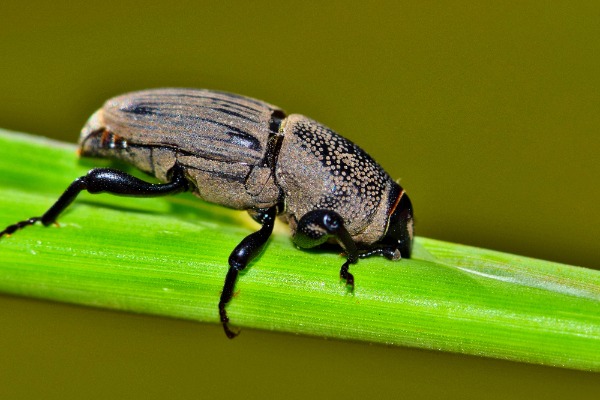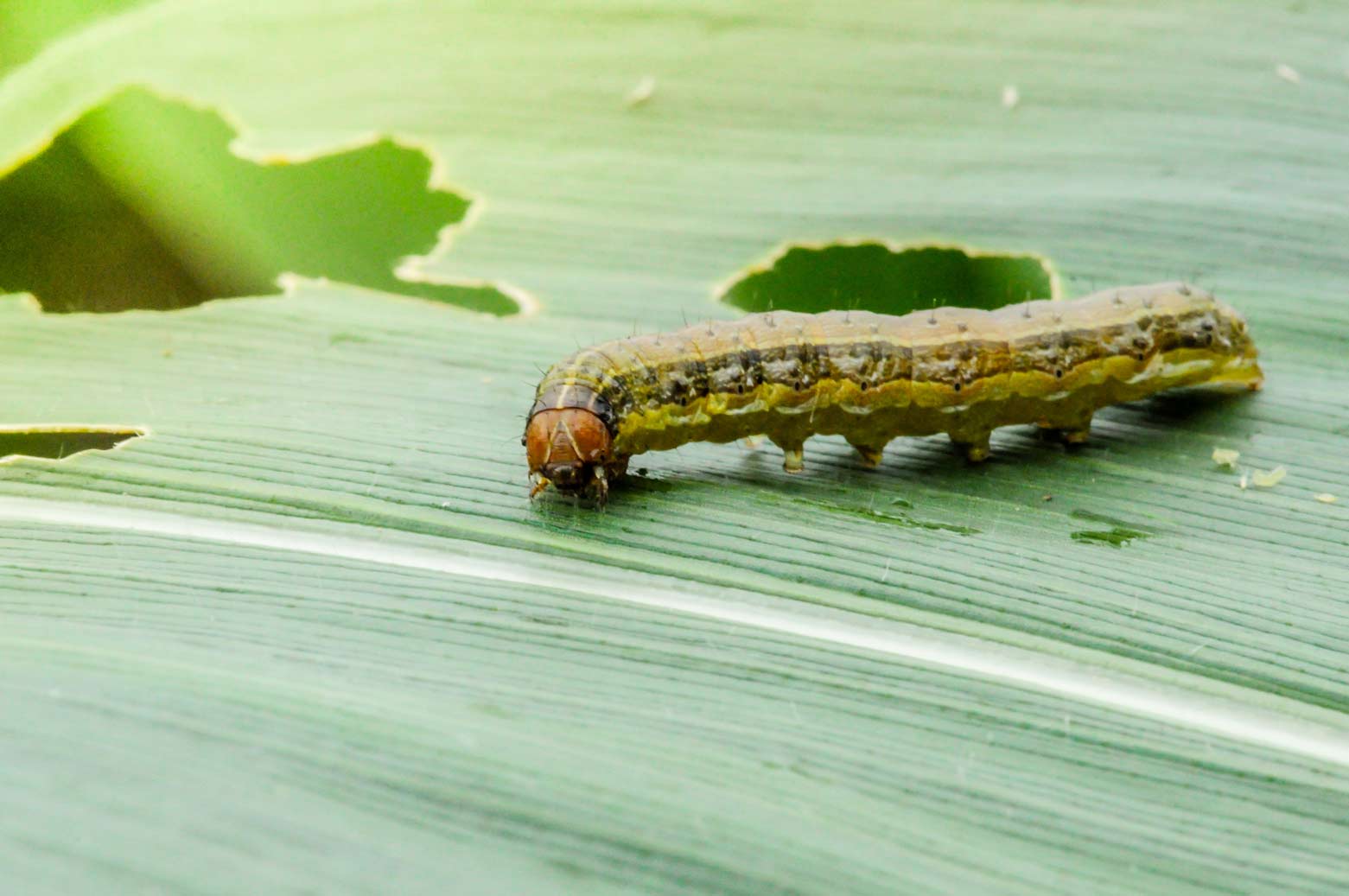How To Identify Lawn Pests
Omaha lawns face more than drought stress and summer heat. Each year, a handful of turf pests emerge that can quietly undermine a lawn’s health, leaving behind bare patches, brown spots, and weakened root systems. While the damage can often be mistaken for disease or water stress, pest activity is a major contributor to turf decline across eastern Nebraska.
Understanding what these pests do to your grass and how to recognize them early is essential for maintaining a thick, green lawn. Come learn how to spot these lawn invaders and control pests in your Omaha yard.
1. White Grubs

White grubs are the larval stage of beetles like masked chafers, Japanese beetles, and June beetles. They are some of the most destructive lawn pests in Omaha because they feed directly on the root system beneath the surface. As they chew through turf roots, grass can no longer take up water or nutrients effectively, leading to irregular brown patches that feel spongy underfoot. If left untreated, the turf can be rolled back like a carpet due to the lack of anchoring roots.
Beyond the root damage, white grub infestations often attract animals such as skunks, raccoons, and birds that tear up the lawn searching for larvae, compounding the problem. Peak activity typically happens in late summer and early fall, though preventative action earlier in the season is often most effective.
Identifying traits:
- C-shaped, creamy white larvae with a brown head
- Found 1–4 inches below the soil surface
- Turf lifts easily like sod due to root destruction
- Increased digging by wildlife
2. Chinch Bugs

Chinch bugs are small, piercing-sucking insects that cause damage by feeding on the crowns and stems of grass plants. Instead of chewing, they extract sap, which leads to a rapid yellowing and browning that resembles drought stress. Because they thrive in hot, dry conditions, chinch bug damage is often concentrated along sunny, compacted areas near driveways or sidewalks.
Their feeding disrupts the plant’s ability to move water, effectively drying the grass out even if the soil is moist. Severe infestations can cause turf death in patches that quickly spread if conditions remain favorable for the pests.
Identifying traits:
- Tiny, fast-moving insects often found at soil level
- Yellow or brown patches in hot, sunny areas
- Turf that looks drought-stressed despite proper watering
- More active during hot, dry summer months
3. Billbugs/Weevils

Billbugs are weevils whose larvae feed inside grass stems and later on the root zone. Their damage is sneaky and often confused with heat or drought stress. The larvae hollow out stems and destroy the plant from the inside, causing wilted or tufted patches of dead grass. They attack below the surface, making billbug problems often go unnoticed until significant turf thinning has occurred. Kentucky bluegrass, one of the most common lawn grasses in Omaha, is especially vulnerable to billbug activity, making this pest a recurring problem in local lawns.
Identifying traits:
- Larvae are legless and white with brown heads, found inside stems or root zone
- Turf feels dry or wilted despite adequate moisture
- Dead patches appear tufted or irregular
- Sawdust-like frass sometimes visible inside damaged stems
4. Sod Webworms

Sod webworms are the larvae of small moths that chew on grass blades at night and hide during the day. Although they’re small, their feeding can cause rapid discoloration in patches across the lawn. Early signs include thinning grass and tiny greenish pellets (frass) scattered across the soil surface. When populations are high, sod webworms can create bare spots, though grass can often recover with prompt treatment and proper care. They’re nocturnal pests, so their damage often goes unnoticed until patches are clearly visible.
Identifying traits:
- Small caterpillars with a tan or greenish body and dark spots
- Silk-lined burrows in thatch or soil
- Moth activity in the evening when larvae emerge to feed
- Small brown patches with frass pellets
5. Armyworms & Cutworms

Armyworms and cutworms are aggressive caterpillars that can devastate turf in a short period of time. Armyworms, in particular, can consume large amounts of leaf tissue, leaving behind large, ragged brown patches or completely stripped turf overnight. Cutworms tend to sever grass stems at the soil line, creating scattered dead spots. These pests often appear in late summer and early fall, sometimes after warm, wet weather. Their feeding is so rapid that homeowners often notice damage only after significant areas have already been affected.
Identifying traits:
- Smooth-bodied caterpillars, often green, brown, or black
- Most active at night
- Ragged or chewed blades and rapid patch development
- Sudden, widespread turf thinning
6. Ants, Ticks, & Small Mammals

Not all lawn damage comes directly from insects feeding on grass. Ants can build mounds that disrupt soil structure and turf uniformity, while ticks pose health risks to people and pets in taller vegetation and lawn edges. Moles, voles, and skunks are often drawn to yards with existing pest problems, especially grub infestations, where they dig up turf in search of food. These secondary issues can make an existing pest problem worse or create new challenges of their own.
Identifying traits:
- Ant mounds visible on the lawn surface
- Increased mole or skunk activity (often a sign of grubs)
- Ticks found in tall grass or shaded lawn edges
- Raised soil tunnels or digging marks
Get Professional Pest Control In Omaha, NE
If you’re noticing suspicious brown patches, wilted turf, or increased insect activity, it may be time to bring in a professional. Summit Lawns understands Omaha’s pest cycles and can identify issues quickly, apply treatments at the right time, and help strengthen your turf’s defenses. From grub prevention to curative pest control, Summit Lawns can help rid your Omaha lawn of pests this year!
